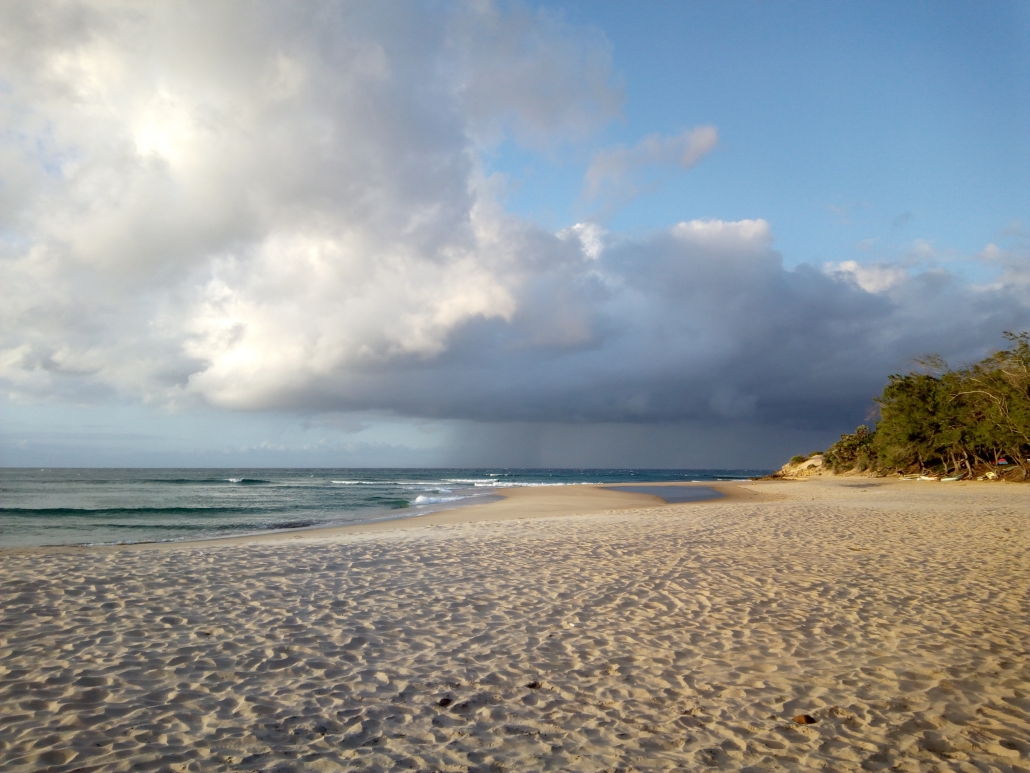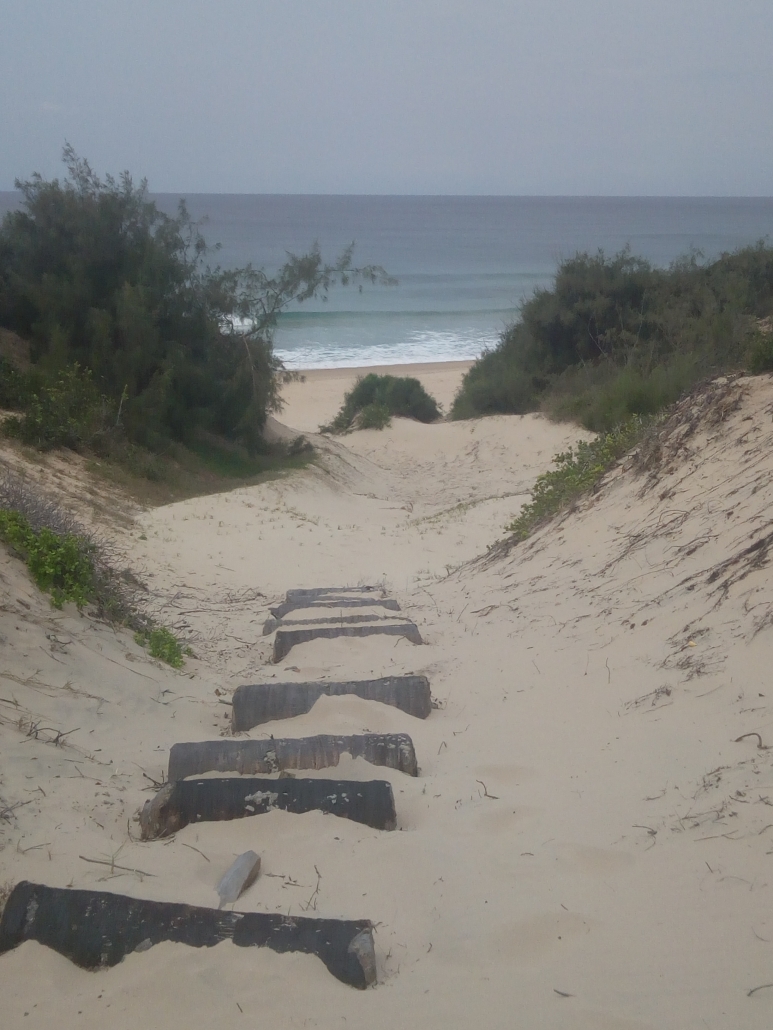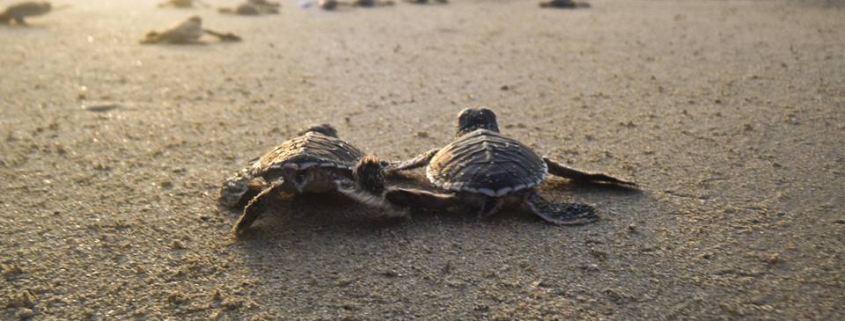Turtle Nesting & Micro Plastics in Mozambique
Here in Mozambique, we at All Out Africa Marine Research Centre (AOA MRC) sampled the area of Tofo Beach most known for sightings of nesting turtles in early December 2018. We sampled the sand on the shore line and nesting line with a view to understanding more the amount of micro plastics washing up in this area and the potential effects turtle nests.
Very little plastic is recycled and a lot of plastic is single-use. The problem with plastic is that even after you are finished with it, plastic continues to exist for hundreds of years! Plastic doesn’t break down to be reused like banana skins or paper. Instead plastic sits in the environment in the same form. It builds up. We can bury it or change its location but that doesn’t stop it existing somewhere. More than 8 million tons of plastic enters the ocean as trash each year. That’s the same as the weight of 2 million adult elephants or 45 million adult turtles! And even more plastic is buried on the land. This plastic can trap animals or be eaten by animals making them ill. It can even be eaten by animals that we then eat and toxic chemicals from the plastic can enter our bodies and make us sick! Plastic pieces in the ocean act as aggregants for chemicals – meaning that chemicals ‘stick’ or ‘clump’ around them. This means that these pieces of plastic washed up on the beach at turtle nesting sites could be have different kinds of negative survival effect on the eggs:
- By degrading and releasing chemicals in to sand local to them
- By carrying chemicals which have aggregated around them to the nest site
Both mechanisms can then cause a non-natural increase in various chemicals in the nest site which can potentially permeate the ‘breathable’ shell of the egg and affect the developing offspring.

Here in Mozambique at the AOA MRC we have already been studying the plastic loading of the local beaches for over 10 years. We have recorded an increase in macro and micro plastics found showing that this is a growing problem that unfortunately, due to global plastic usage trends, we can only expect to worsen in the next decade. Our data shows that most of the plastics on the beach in Tofo area have not be dropped here as immediate litter, but rather have usually spent quite a considerable time in the ocean, evident from their degradation level. They have been brought in on the currents and tides and washed up here. So, although we work with local schools and run education projects on not using single-use plastics and not dropping litter, we can’t expect to solve the problem entirely this way as it is not created entirely locally but rather comes to our beaches from elsewhere in the world.
As part of a global study, and in collaboration with Ellen MacArthur in Professor Brendan Godley’s lab at Exeter University in the UK, the results from these Tofo turtle nest area sand samples will be assessed alongside others from turtle nesting beaches all over the world. We at AOA Marine Research Centre are very excited to be able to contribute on this important project. We also want to send a massive thank you to students of Sir Henry Floyd Grammar School from the UK who, while on a World Challenge Marine Project with AOA MRC in 2018, donated the money to buy equipment, run sampling, data collection and some processing for this Turtle Nesting & Micro Plastics project.

“While I was crawling round on an almost deserted stretch of beach sorting sand for this study, a Mozambican fisherman who was hand-lining for fish in the same stretch of beach started watching me. I’m sure he thought I was crazy with my glass bowls and metal spoons and scale and GPS, sorting sand, then moving along the beach and repeating the exact same process a little further up! As we both moved slowly along the same stretch of beach we went from smiling and saying Ou Wadi (Good morning) to him putting down his line and coming over to ask me, with a big broad smile, essentially what on earth I was doing! We managed, both in our limited Portuguese (his main language was Guitonga and mine English), to talk about the beach and how it has changed. I showed him examples of things that would naturally be in the sand – shells and cuttlefish internal skeletons, and things that would not – small plastic pieces in white, green and blue. He said he saw more of these plastic pieces now on the beach than ever before. We talked about how we wouldn’t be well if we ate plastic, so then the fish wouldn’t be well if they did. He talked about how it took longer to catch fish now and he thanked me for being here. He said he was thanking me because things were changing, he was bringing home less fish and he didn’t know why but he knew that understanding more about what was changing in the waters and on the beach here was important to look after the area and make sure there was beauty and fish here in future. He went back to his fishing and my heart felt lifted. Everything is connected, our wasteful needless plastic use affects our ecosystem, changes in our ecosystem affect lifecycles of marine animals, and changes in marine animals affect us. The most recent disposable plastic item you used was just one cup/straw/bag/etc but it makes a difference if that was the final disposable plastic item you ever use. Make your last single use plastic, your LAST single use plastic.”
Keep your eyes on the AOA blogs for the outcome of this project expected sometime in 2019!
Written By Katie Elizabeth Reeve-Arnold | Marine Research Project Coordinator




Leave a Reply
Want to join the discussion?Feel free to contribute!